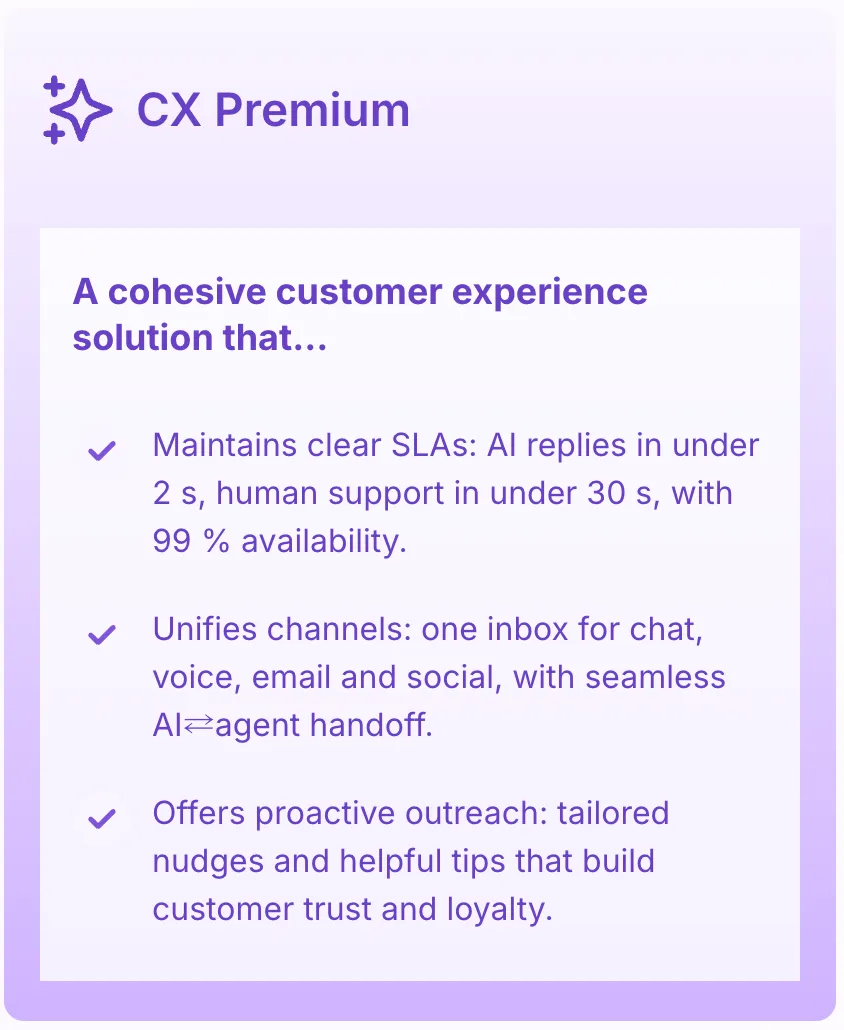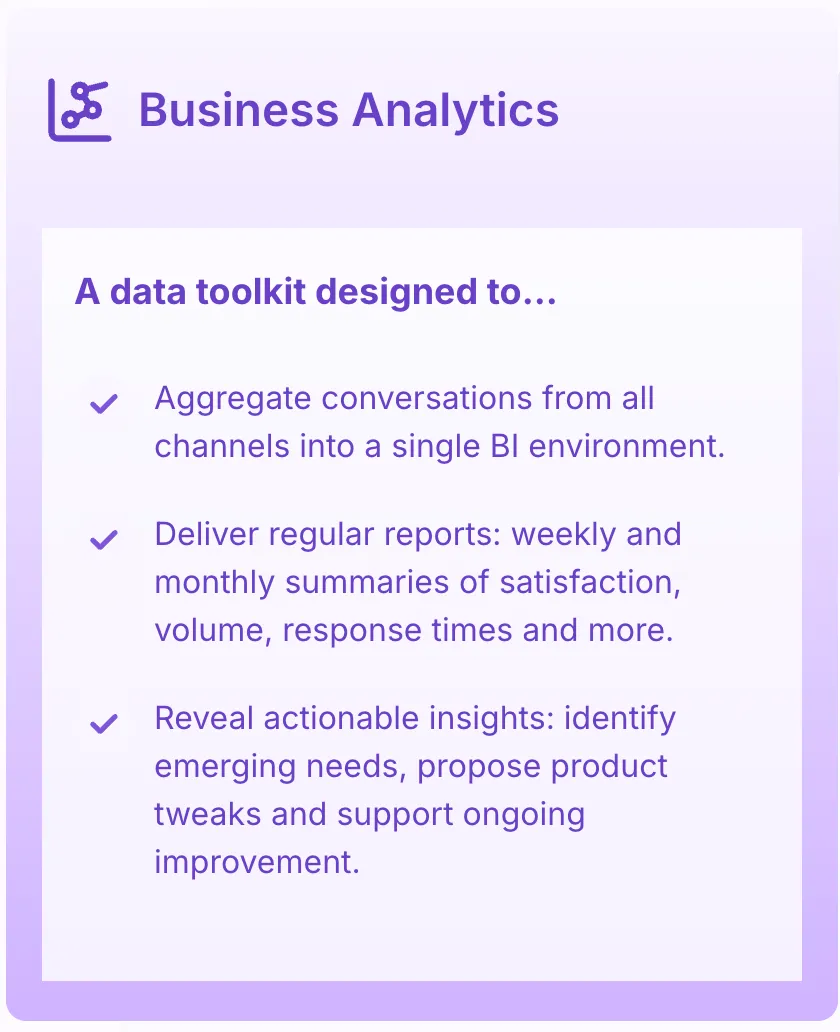Key Industry Statistics:
- 30% reduction in operational costs through AI automation
- 200% ROI achieved within months of implementation
- 24/7 availability without increased staffing costs
AI agents now serve as the backbone of modern customer service operations, handling everything from routine inquiries to complex problem-solving scenarios. These intelligent systems work alongside human agents, creating a hybrid service model that maximizes efficiency while minimizing expenses.
The financial impact of AI in customer service extends beyond direct cost savings. Businesses are experiencing:
- Reduced training and onboarding costs
- Lower infrastructure maintenance expenses
- Decreased customer churn rates
- Improved first-contact resolution rates
From automated chat responses to predictive analytics, AI-driven solutions are revolutionizing how companies approach customer support. These technological advancements enable businesses to scale their operations without proportionally increasing their budget.
The following analysis explores the top 10 ways AI agents are creating substantial cost savings in customer service operations. You'll discover how leading companies leverage these technologies to reduce expenses while enhancing service quality and customer satisfaction.

1. Automation of Routine Tasks in Contact Centers
AI-powered automation is transforming contact center operations by efficiently handling repetitive customer inquiries. Modern AI systems can process common requests such as:
- Password resets
- Order tracking
- Account balance checks
- Basic product inquiries
- Appointment scheduling
These automated solutions significantly reduce operational costs by 40-60% while maintaining service quality. With the ability to handle thousands of simultaneous interactions, a single AI agent greatly decreases the need for human intervention in routine matters.
Impressive Results from Real-World Implementations
The effectiveness of AI-powered automation is evident in various real-world implementations:
"Our AI automation system processes 75% of routine customer inquiries, saving us $2.3 million annually in staffing costs" - Leading telecommunications provider
Extending Automation Beyond Customer Interactions
The benefits of automation extend beyond customer interactions to internal processes as well:
- Automated ticket categorization - AI correctly routes 95% of support tickets
- Smart form filling - Reduces data entry time by 80%
- Quality monitoring - AI reviews 100% of interactions vs. traditional 2-3% sampling
- Post-call documentation - Automated call summaries save agents 15 minutes per hour
These automated systems continuously learn from interactions, becoming more efficient and accurate over time while reducing human error rates by 65%.
2. Enhancing Issue Resolution with Conversational Virtual Agents
AI-powered virtual agents are changing the game for first-level customer support by taking care of up to 80% of common inquiries without needing a human. These smart chatbots use natural language processing to understand what the customer wants, give accurate answers, and fix problems in just a few seconds.
Key capabilities of modern virtual agents include:
- 24/7 Instant Response: Customers receive immediate assistance at any time
- Multi-language Support: Automatic translation enables global service delivery
- Context-Aware Solutions: Virtual agents remember previous interactions and customer preferences
- Smart Escalation: AI recognizes complex issues requiring human intervention
Companies using conversational AI are seeing great results:
- 60% reduction in customer wait times
- 45% decrease in support ticket volume
- $3-5 cost savings per interaction through self-service
Virtual agents are really good at handling:
- Password resets
- Account status inquiries
- Product information requests
- Booking and scheduling
- Basic troubleshooting
These AI solutions get better with every interaction, constantly improving their response accuracy and expanding their knowledge base to tackle more complex customer needs.
3. Streamlining Operations via Advanced Call Management Tools
AI-powered call management systems are changing the game for customer service operations with smart call routing and real-time data analysis. These advanced tools ensure that incoming calls are directed to the most suitable agents based on various factors such as:
- Customer history and preferences
- Agent expertise and availability
- Issue complexity
- Language requirements
- Current call volume
Understanding Customer Emotions with Speech Analytics
Speech analytics features in these systems can pick up on customer emotions, important keywords, and recurring patterns during conversations. This allows the system to quickly identify urgent cases, frustrated customers, and high-risk interactions that need immediate attention.
Measuring Sentiment through AI Analysis
AI sentiment analysis tools go a step further by examining various aspects of the conversation, including:
- Voice tone and pitch variations
- Speaking pace
- Word choice
- Silence duration
- Interruption patterns
These insights empower supervisors to make informed decisions about how calls should be handled and where resources should be allocated. Companies that have adopted these cutting-edge tools are seeing impressive results:
35% faster resolution times and 25% reduction in escalations.
Creating a Self-Optimizing System
By combining dynamic call routing with speech analytics, we can create a self-optimizing system that constantly improves how calls are distributed and handled. This improvement is based on real-time performance data, ensuring that our strategies remain effective and efficient.
4. Predictive Customer Analytics for Demand Forecasting
Predictive analytics transforms customer service resource management through AI-powered demand forecasting. The technology analyzes historical data patterns, seasonal trends, and real-time metrics to predict call volumes with up to 95% accuracy.
Key benefits of AI-driven demand forecasting include:
- Precise Staffing Levels: AI algorithms calculate optimal agent schedules based on predicted call volumes, reducing labor costs by 15-20%
- Smart Resource Distribution: Real-time adjustments to agent assignments across different channels and time zones
- Peak Period Planning: Advanced notice of high-volume periods allows proactive staffing adjustments
- Cost Control: Elimination of overtime expenses through accurate workforce scheduling
The system continuously learns from new data, improving its forecasting accuracy. Companies using predictive analytics report:
- 25% reduction in idle agent time
- 30% decrease in customer wait times
- 40% improvement in first-call resolution rates
These AI-powered forecasting tools integrate with existing workforce management systems, creating a data-driven approach to resource optimization that scales with your business needs.
5. Omnichannel Integration Powered by AI Platforms
AI-powered omnichannel platforms are changing the game in customer service by creating a seamless support system across various communication channels. These platforms bring together:
- Voice calls
- Live chat
- Email support
- Social media messages
- SMS communications
- Mobile app interactions
The AI technology behind these platforms ensures that the context of conversations is preserved across different channels. This means that customers can effortlessly switch between platforms without having to repeat themselves. For example, a customer can initiate a chat conversation, then move on to a phone call, and finally follow up with an email - all while maintaining a continuous flow of communication.
Cost Benefits of Omnichannel Integration
The integration of multiple channels through AI platforms brings significant cost advantages:
- Reduced Platform Costs: Companies can save 25-40% by replacing multiple standalone systems with a single AI-powered solution.
- Lower Training Expenses: Customer service agents only need to learn one unified system instead of multiple platforms, resulting in lower training costs.
- Improved First Contact Resolution: With complete access to customer history, businesses can reduce repeat contacts by 35%, leading to higher first contact resolution rates.
- Automated Channel Switching: The AI technology automatically directs conversations to the most cost-effective channels based on their complexity, further optimizing resource allocation.
Proactive Support and Issue Resolution Opportunities
The integration of data from various channels allows the AI system to identify patterns and trends in customer interactions. This opens up opportunities for proactive support, where businesses can anticipate and address issues before they escalate. Additionally, the AI-powered system can also automate certain types of issue resolution based on common queries or problems identified across channels.
Overall, the combination of omnichannel integration and AI technology has the potential to transform customer service operations, delivering both cost savings and improved customer experiences.

6. Boosting Employee Productivity with AI Assistance
AI-powered tools transform customer service agents into high-performance professionals. These intelligent systems provide real-time suggestions, automate documentation, and handle multiple customer interactions simultaneously.
Key productivity enhancements include:
- Smart Response Suggestions: AI analyzes customer inquiries and provides agents with pre-written responses, reducing typing time by 40%
- Automated Documentation: Real-time call transcription and automatic case notes save agents 15 minutes per interaction
- Multi-tasking Support: AI manages multiple chat sessions while agents focus on complex problem-solving
- Knowledge Base Integration: Instant access to relevant information through AI-powered search reduces resolution time by 60%
The impact on response accuracy is significant:
- Reduced error rates from 12% to 3% through AI-guided responses
- 25% decrease in escalations due to improved first-contact resolution
- 35% reduction in repeat contacts through comprehensive issue resolution
These AI tools enable agents to handle 3x more inquiries per hour while maintaining high-quality service standards. Companies report a 45% increase in agent productivity after implementing AI assistance systems.
7. Personalized Customer Engagement at Scale with AI Agents
AI agents are changing the game when it comes to customer engagement. They use real-time data analysis to create highly personalized experiences for each customer. By tracking things like customer preferences, purchase history, and interaction patterns, these systems are able to craft responses and recommendations that are tailored specifically to each individual.
Key personalization capabilities include:
- Dynamic content adjustment based on customer segments
- Real-time modification of offers during conversations
- Predictive product recommendations
- Customized communication timing and channel preferences
The impact on customer retention rates speaks for itself:
Companies using AI-driven personalization report a 20-30% increase in customer lifetime value and a 15% reduction in churn rates
AI agents have the ability to analyze vast amounts of data in order to create unique profiles for each customer. This allows businesses to implement strategies such as:
- Personalized product bundles
- Custom pricing strategies
- Targeted promotional campaigns
- Individualized service level adjustments
These personalized interactions have been shown to drive tangible business results, including:
- Increased cross-selling opportunities
- Higher customer satisfaction scores
What's more, these AI systems are constantly learning from every interaction they have with customers. This means that over time, they become even better at understanding and matching individual preferences and behaviors.
8. Real-world Cost Savings from Legacy System Optimization with AI Solutions
Companies embracing AI solutions report substantial cost savings through legacy system elimination. Bank of America saved $12 million annually by replacing outdated CRM software with AI-powered customer service platforms. The bank's system downtime dropped by 85%, resulting in enhanced customer satisfaction and reduced operational costs.
Delta Airlines cut expenses by $8.5 million when transitioning from multiple legacy ticketing systems to a unified AI solution. Their new system:
- Reduced software licensing costs by 60%
- Decreased system maintenance requirements by 75%
- Minimized integration issues between platforms
- Improved data accuracy by 95%
Walmart's AI implementation eliminated 12 separate legacy systems, saving $15 million yearly in licensing fees. The retail giant's quality control metrics improved by:
- 90% reduction in system crashes
- 70% faster issue resolution
- 40% decrease in IT support tickets
- 99.9% system uptime
These real-world examples demonstrate how AI solutions streamline operations while significantly reducing costs associated with maintaining outdated systems.
9. High Return on Investment (ROI) from AI Adoption in Customer Service Operations
Recent case studies reveal remarkable financial gains from AI implementation in customer service. Global tech giant XYZ Corp reported a 245% ROI within just six months of deploying AI agents, saving $3.2 million in operational costs.
Key ROI metrics from successful AI implementations:
- Reduced Resolution Time: Companies cut average handling time by 40-60%
- Lower Staff Turnover: 25% reduction in agent attrition rates
- Increased First Contact Resolution: 35% improvement in first-time resolution
- Decreased Training Costs: 50% reduction in new agent training expenses
Financial Services Leader ABC Bank transformed their customer service with AI agents, achieving:
- 220% ROI in the first quarter
- 65% reduction in escalation rates
- $2.5 million saved through automated ticket routing
- 30% increase in customer satisfaction scores
These results demonstrate AI's ability to deliver substantial returns through improved efficiency and reduced operational costs. The combination of faster response times and decreased escalation rates creates a compound effect on cost savings, making AI adoption a strategic investment for customer service operations.

Challenges and Strategic Considerations for Maximizing Savings with AI Agents in Customer Service
Implementing AI solutions in customer service brings significant cost advantages, yet organizations face critical challenges that require strategic planning and careful consideration.
Data Privacy and Security Concerns
- AI systems process vast amounts of sensitive customer information
- Risk of data breaches and unauthorized access to personal data
- Need for robust encryption and compliance with data protection regulations
- Regular security audits and updates to protect against emerging threats
Balancing Automation with Human Touch
- AI interactions can feel impersonal and frustrating for complex issues
- Customer preference for human agents in emotionally charged situations
- Need for seamless handoff between AI and human agents
- Training AI systems to recognize emotional cues and respond appropriately
Strategic Implementation Guidelines
- Align AI initiatives with specific business objectives and KPIs
- Start with pilot programs to test and refine AI implementations
- Invest in comprehensive staff training programs
- Monitor customer satisfaction metrics alongside cost savings
- Regular assessment of AI performance and adjustment of algorithms
Risk Mitigation Strategies
- Implement strong data governance frameworks
- Create clear escalation paths for AI-to-human handovers
- Develop contingency plans for system failures
- Maintain transparency about AI use in customer interactions
The successful integration of AI in customer service requires a balanced approach that prioritizes both cost efficiency and customer experience while addressing privacy concerns and maintaining human connection in critical interactions.
Conclusion
AI agents are set to transform customer service operations in 2025, bringing significant cost savings through:
- Smart automation of routine inquiries and tasks
- AI-powered virtual agents enabling efficient self-service
- Advanced call management with intelligent routing
- Predictive analytics optimizing resource allocation
- Seamless omnichannel integration reducing platform costs
- Enhanced agent productivity through AI assistance
- Personalized customer engagement boosting retention
- Legacy system optimization eliminating redundant expenses
- Proven ROI exceeding 200% in many implementations
These innovative solutions benefit both businesses and customers: companies lower their operational costs while customers enjoy quicker, more tailored service. The future of customer service is in strategic AI adoption, finding the right balance between automation and human interaction to achieve both cost savings and customer satisfaction.
FAQs (Frequently Asked Questions)
How are AI agents automating routine tasks to reduce customer service costs in 2025 ?
AI agents automate repetitive inquiries and processes within contact centers, significantly reducing the manual workload for human agents. This automation leads to lower operational expenses by streamlining routine tasks, enhancing contact center efficiency, and enabling staff to focus on more complex customer needs.
In what ways do conversational virtual agents enhance issue resolution and cut support costs ?
Conversational AI-powered virtual agents handle first-level customer support by providing immediate responses, which reduces customer wait times and lessens the need for agent intervention. This self-service approach lowers overall support costs while improving the speed and quality of issue resolution.
What role does predictive customer analytics play in optimizing workforce management and reducing costs ?
Predictive analytics leverages AI to accurately forecast call volumes and anticipate customer needs. This enables businesses to optimize agent schedules and resource allocation, minimizing overstaffing or understaffing expenses and ensuring efficient workforce management that directly reduces operational costs.
How does AI-driven omnichannel integration contribute to cost savings in customer service ?
AI platforms unify various communication channels such as voice, chat, email, and social media into a seamless support system. This consolidation leads to cost benefits by reducing the need for multiple platforms, ensuring consistent service delivery across channels, and improving overall operational efficiency.
Can you explain how boosting employee productivity with AI assistance lowers customer service expenses ?
AI tools empower human agents by assisting them in managing a higher volume of inquiries more effectively. Enhanced response accuracy minimizes repeat contacts and escalations, which reduces workload and associated costs while improving customer satisfaction.
What challenges should businesses consider when implementing AI agents to maximize cost savings in customer service ?
Key challenges include addressing data privacy concerns and maintaining empathy in AI interactions. Balancing automation with a human touch is essential to preserve positive customer experiences. Additionally, aligning AI initiatives with business goals ensures optimal cost savings alongside enhanced service quality.












